When is a Good Time to Plant Grass Seed: Seasonal Tips
- February 9, 2024
- 0 comment
Learn the best times to plant grass seed for a lush lawn, focusing on climate, soil prep, and care. Timing is key to success. When it comes to cultivating a vibrant and healthy lawn, timing is everything. Planting grass seed at the right moment can make the difference between a flourishing green expanse and a disappointing patchwork.
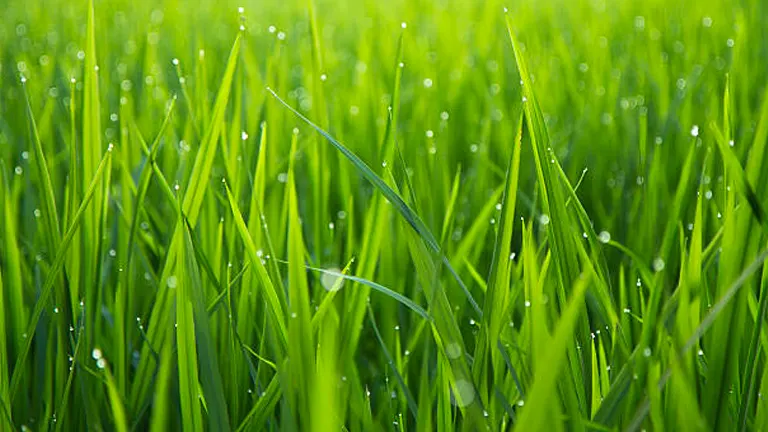
The journey to a lush lawn begins with understanding the cycles of nature and aligning your gardening efforts with the optimal growing conditions for grass seed. In this guide, we’ll explore the crucial factors that determine the best time to plant grass seed, ensuring your lawn receives the perfect start for year-round beauty.
Table of Contents
- Understanding Grass Seed Types
- The Role of Climate and Seasons
- Regional Considerations
- Soil Preparation and Care
- Common Mistakes to Avoid
- Conclusion
- FAQs
Understanding Grass Seed Types
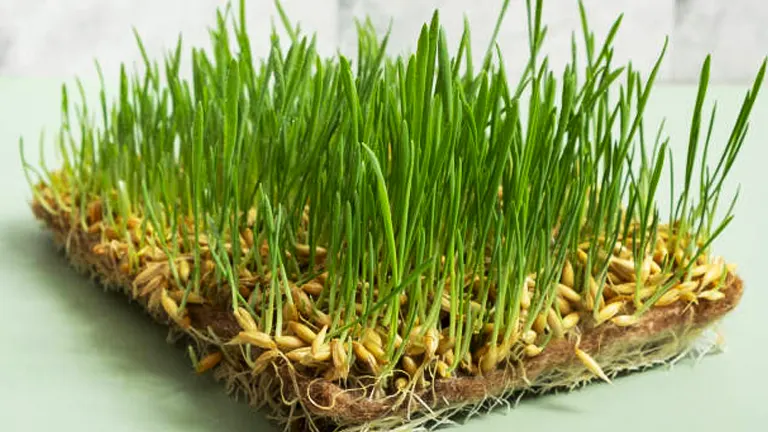
Choosing the optimal time to plant grass seed is pivotal for establishing a healthy, robust lawn. Grass varieties are broadly categorized into cool-season and warm-season types, each responding differently to climate conditions. Additionally, understanding the nuances of these categories and the specific requirements of transitional zones is crucial for successful lawn establishment and maintenance.
Cool-Season Grasses

Cool-season grasses flourish in the cooler climates of the northern regions, where temperature extremes range from cold winters to mild summers. These grasses exhibit vigorous growth during the spring and fall, with ideal planting times in late summer to early fall. This period leverages the residual warmth of summer soil, which supports root development, while cooler air temperatures reduce the likelihood of seedling dehydration and stress.
- Ideal Planting Window: Late August to mid-September for most northern climates, adjusting slightly based on local conditions. A secondary planting window in early spring can accommodate late-season growth but requires vigilance against weed competition and summer drought stress.
- Watering Needs: Cool-season grasses benefit from consistent moisture, especially during the germination and establishment phases. The fall planting aligns with natural rainfall patterns in many regions, reducing the need for supplemental watering.
Examples and Specifics:
- Kentucky Bluegrass: Known for its fine texture and rich color, it requires 2-3 weeks for germination. It’s ideal for lawns with full sun to partial shade.
- Fescue Varieties (Tall, Fine, and Chewings): These are tolerant of a wide range of conditions, from shade to poor soil quality, making them versatile for various lawn situations. Tall Fescue is particularly drought-resistant.
Warm-Season Grasses

Warm-season grasses are adapted to the southern parts of the country, thriving in hot summer temperatures and exhibiting peak growth from late spring through summer. These grasses are best planted in late spring to early summer when the soil temperature consistently exceeds 65°F, ensuring rapid germination and establishment before the intensity of summer heat.
- Ideal Planting Window: Late May to early July, depending on the specific regional climate, ensuring that soil temperatures are adequately warm.
- Watering Needs: Initial deep watering to encourage deep root establishment is crucial, followed by regular, less frequent watering sessions to maintain moisture without oversaturating the soil.
Examples and Specifics:
- Bermuda Grass: Highly drought-tolerant and capable of withstanding heavy foot traffic, making it ideal for recreational lawns and sports fields. It germinates in 7-14 days under optimal conditions.
- Zoysia Grass: Valued for its tolerance to heat, drought, and partial shade. It establishes slowly but forms a dense, carpet-like lawn that resists weeds and foot traffic.
Transitional Zone Considerations
The transitional zone presents a unique challenge, straddling the climatic extremes suitable for both cool and warm-season grasses. Selection here depends on specific yard conditions, including sun exposure, soil type, and moisture levels, as well as the homeowner’s maintenance willingness.
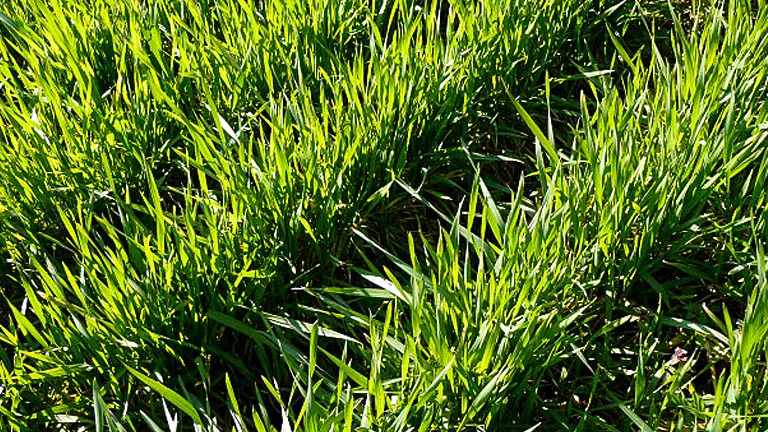
Hybrid Varieties and Microclimate Adaptation: Advances in turfgrass breeding have produced hybrid varieties and cultivars that offer greater resilience and adaptability to transitional zones. These can offer a viable solution for lawns facing the extremes of both summer heat and winter cold.
Example:
- Tall Fescue Hybrids: Enhanced with heat tolerance, these hybrids can survive the hot summers typical of transitional areas while maintaining the cool-season growth advantage.
The Role of Climate and Seasons
Understanding the influence of climate and seasons on grass seed germination and growth is pivotal for timing your planting.
Spring Planting: A Closer Look
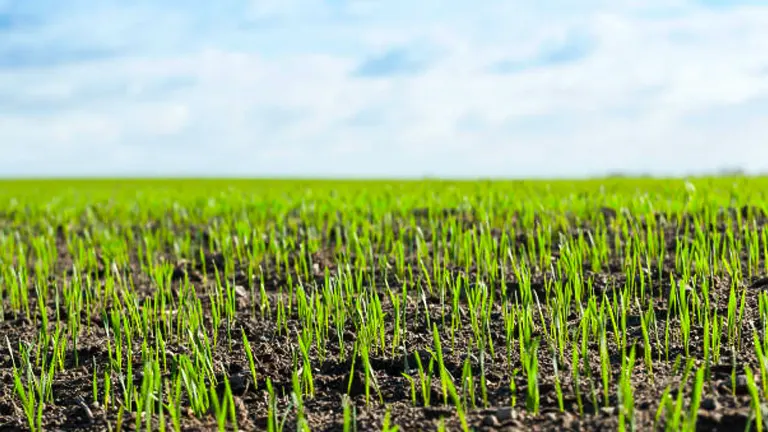
Spring symbolizes renewal and growth, making it a tempting season for planting cool-season grasses. The moderate temperatures and increased moisture create conducive conditions for seed germination. However, this period also welcomes a surge in weed growth, posing competition for nutrients and sunlight. Furthermore, the unpredictability of spring weather can lead to late frosts that threaten young seedlings. To mitigate these risks, consider:
- Pre-emergent Weed Control: Applying a pre-emergent herbicide can prevent weed seeds from germinating, giving grass seeds a competitive advantage. However, timing is crucial to avoid affecting the grass seed’s germination.
- Frost Dates: Monitor local frost dates and wait until the risk has passed before planting to protect seedlings from sudden cold snaps.
Fall Planting: Maximizing Success
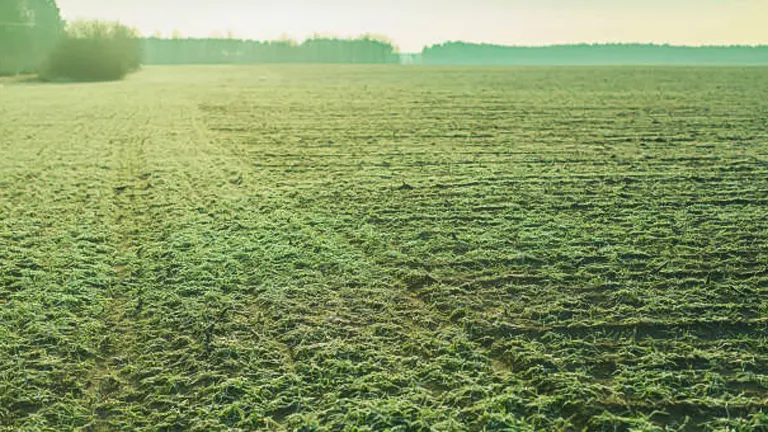
Fall is often deemed the gold standard for planting cool-season grasses. The soil retains warmth from the summer, aiding in rapid seed germination, while cooler air temperatures reduce the risk of evaporation, ensuring seedlings receive ample moisture. This season naturally aligns with the growth cycle of cool-season grasses, encouraging strong root development before the onset of winter. Additionally, the reduced weed competition allows for a cleaner establishment. For warm-season grasses, late spring through summer remains the ideal window, as fall temperatures can be too cool for successful germination. Key strategies for fall planting include:
- Soil Moisture Monitoring: While fall typically offers natural moisture, dry spells can occur. Monitor soil moisture levels closely and water as needed to keep the soil consistently moist but not waterlogged.
- Timing: Aim to plant at least 45 days before your region’s first expected frost date to allow sufficient time for establishment.
Summer and Winter Planting: Understanding the Challenges
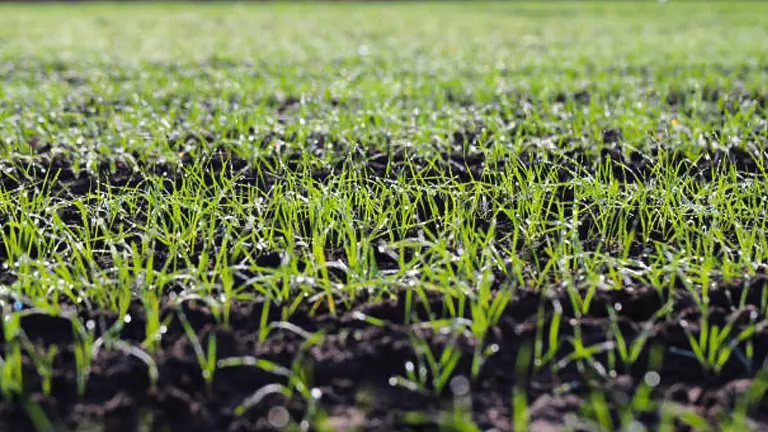
Summer presents a challenging time for planting grass seed due to high temperatures and potential drought conditions, which can stress young seedlings. If planting during summer is unavoidable, focus on:
- Mulching: Applying a light layer of mulch over the seeded area can help retain soil moisture and lower soil temperature, aiding germination.
- Watering: Implement a rigorous watering schedule to counteract the high evaporation rates, ensuring seedlings remain hydrated.
Winter planting, or “dormant seeding,” involves sowing grass seed during the cold months, allowing it to naturally germinate once conditions improve in spring. While this method can be effective, especially in regions with milder winters, it risks seed erosion or predation by birds and requires precise timing to prevent premature germination during warm spells.
Unique Considerations for Different Climates
- Arid and Semi-Arid Regions: In areas with low annual rainfall, consider xeriscaping principles or drought-resistant turf varieties that require less water.
- Humid Subtropical Regions: These areas may benefit from disease-resistant varieties due to higher humidity and moisture, which can foster fungal growth.
Regional Considerations
The success of your lawn starts with recognizing the impact of your region’s climate on grass growth. Here’s how to approach it:
- Northern Lawns: Predominantly cool-season grasses thrive here. The optimal planting time is late summer to early fall, avoiding the heat of summer and giving the grass time to establish before winter sets in.
- Southern Lawns: Warm-season grasses are the stars in these regions, requiring planting from late spring as the soil warms, ensuring they’re well-established before the heat of summer.
- Midwest and Transitional Zones: These areas demand a balanced approach. Evaluate your local weather patterns and soil conditions to decide between cool and warm-season grasses. The key is to plant in a window that avoids the extreme temperatures of summer and winter.
Soil Preparation and Care
Before sowing a single seed, the condition of your soil must be prime. Here’s how to prepare it:
- Testing Soil pH and Nutrients: Begin with a soil test to determine pH and nutrient levels. Most grass types prefer a slightly acidic to neutral pH (between 6.0 and 7.0). Amend the soil based on test results to create the ideal growing environment.
- Preparing the Soil: Clear the area of weeds and debris. Use a tiller or garden fork to loosen the soil to a depth of about 2-3 inches and mix in any needed amendments. Smooth the area with a rake to create a level surface.
- Choosing Quality Seed: Invest in high-quality grass seed suited to your climate and lawn’s sun exposure. This ensures better germination rates and a healthier lawn.
Post-Planting Care
The care your newly seeded lawn receives is just as crucial as the preparation.
- Watering: Keep the soil consistently moist but not waterlogged. Water lightly and frequently, at least once a day, until the seeds germinate. After germination, gradually reduce the frequency but increase the depth of watering to encourage deep root growth.
- Fertilizing: Wait until you’ve mowed the lawn a few times before applying fertilizer. This gives the roots time to establish. Choose a fertilizer suited for your grass type and follow the recommended rates and timings.
- Mowing: Begin mowing when the grass reaches about 3 inches in height. Never remove more than one-third of the blade length at a time to avoid stressing the grass.
Common Mistakes to Avoid
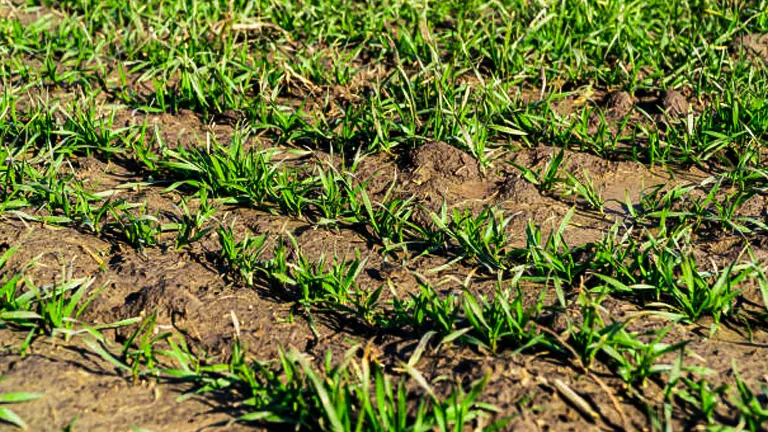
Achieving a lush, vibrant lawn requires more than just sowing grass seed; it demands careful planning and execution. Avoiding common pitfalls is crucial for the successful establishment and growth of your lawn. Here are key mistakes to avoid, along with strategies for ensuring your lawn thrives from the start.
Improper Timing for Seed Planting
One of the most critical errors is sowing grass seed at the wrong time of year. This mistake can drastically affect germination rates and the overall success of your lawn.
- Cool-Season Grasses: Avoid planting in the peak of summer or the dead of winter. The best times are early fall or spring when temperatures are mild.
- Warm-Season Grasses: These should not be planted in late fall or winter. Late spring, when the soil has warmed, is ideal.
Timing should also consider your specific climate zone and expected weather patterns, adjusting planting schedules as needed for optimal growth conditions.
Neglecting Soil Preparation
Soil preparation is often overlooked but is a cornerstone of a healthy lawn. Poorly prepared soil can lead to poor seed germination and weak grass growth.
- Soil Testing: Before planting, test the soil’s pH and nutrient levels. Most grasses prefer a pH between 6.0 and 7.0. Amend the soil based on the test results to provide the best environment for your grass.
- Tilling and Aeration: Compact soil can hinder root growth. Tilling the soil before planting and aerating existing lawns can improve water and nutrient penetration.
- Organic Matter: Incorporating organic matter such as compost can enhance soil structure, improve drainage, and provide essential nutrients.
Incorrect Watering Practices
Watering too much or too little can doom a new lawn before it even gets started. Proper watering is essential for seed germination and establishing a deep, resilient root system.
- Overwatering: Can lead to fungal diseases and shallow root systems. Ensure your lawn has proper drainage and water only as needed to keep the soil moist, not saturated.
- Underwatering: Can prevent seeds from germinating and stress young grass. Seedlings require consistent moisture. Implement a watering schedule that keeps the top inch of soil moist during the germination period.
Overlooking the Importance of Seed Selection
Choosing the wrong type of grass seed for your area’s climate or your lawn’s specific conditions (shade levels, soil type, etc.) is a common oversight that can impact lawn success.
- Research: Select a grass type that thrives in your climate and suits your yard’s sun exposure, usage, and maintenance preferences.
- Quality: Invest in high-quality, disease-resistant seeds that offer a higher germination rate and better long-term results.
Ignoring Post-Planting Care
The care your lawn receives after planting is just as important as the preparation. Failing to properly maintain the lawn can lead to weak growth and increased problems.
- Fertilization: Wait until the grass has germinated and established before applying fertilizer. Use a starter fertilizer with the right nutrient balance for young grass.
- Mowing: Don’t rush to mow. Allow the grass to reach about 3-4 inches in height before the first mow to ensure it’s strong enough to withstand the stress.
By being aware of these common mistakes and employing strategic, informed practices, you can significantly enhance the establishment, health, and beauty of your lawn. Remember, patience and attention to detail in these early stages can lead to a lush, thriving lawn that’s well worth the effort.
Conclusion
Timing your grass seed planting is a critical step toward achieving a lush, healthy lawn. By understanding the ideal conditions for your specific grass type and region, preparing the soil properly, and following through with diligent care, you can ensure your lawn has the best possible start. Remember, patience and attention to detail during these early stages will pay off with a beautiful green space that lasts for years to come.
FAQs
- What’s the best time of year to plant grass seed in cool-season areas?
In cool-season areas, early fall or early spring are the best times to plant grass seed. Fall planting is optimal as it allows grass to establish before winter. Aim for late August to mid-September. - Can I plant grass seed in the summer?
Summer planting is not recommended due to high temperatures and potential drought, which can stress young grass. If necessary, choose drought-resistant varieties and ensure the soil remains moist with regular watering. - Is it too late to plant grass seed in November?
For most climates, November is too late due to colder temperatures inhibiting germination. In warmer regions with mild winters, dormant seeding in late fall can lead to spring germination. - How does soil temperature affect grass seed germination?
Soil temperature significantly influences germination. Cool-season grasses germinate best in soil temperatures between 50-65°F, while warm-season grasses prefer 60-75°F. Use a soil thermometer to find the optimal planting time. - Can I plant grass seed before it rains?
Planting before a light to moderate rain can be advantageous, as the moisture helps with seed germination. However, heavy rain might wash away seeds, so timing and weather forecasts are crucial. - How long after planting grass seed can I see growth?
Germination times vary by grass type. Cool-season grasses typically sprout in 7-14 days under ideal conditions, while warm-season grasses may take 7-30 days. Proper soil preparation and moisture are key factors. - Do I need to aerate my lawn before planting grass seed?
Yes, aeration is beneficial before seeding. It improves soil structure, enhances water and nutrient absorption, and helps seeds make direct contact with the soil, increasing the chances of successful germination. - What’s the latest I can plant grass seed in the fall?
Aim to plant at least 45 days before your area’s first expected frost date. This window allows enough time for the grass to establish a strong root system before winter.
In summary, the key to a lush, healthy lawn lies in timing the planting of your grass seed with care. Whether you’re in a cool-season area planting in early fall or spring, or in a warm-season region opting for late spring planting, understanding your local climate and soil conditions is crucial. Remember, a little preparation and the right timing can lead to beautiful, lasting results. Happy planting!

Benjamin Brooks
Forestry AuthorGreetings! I'm Benjamin Brooks, and my journey over the past 15 years has revolved around the fascinating realms of content creation, expertise in snow clearing, and the intricate world of lumberjacking and landscaping. What began as a simple curiosity about the natural world and heavy machinery has evolved into a passionate profession where my love for crafting words intertwines seamlessly with my lumberjacking and garden skills.













Leave your comment